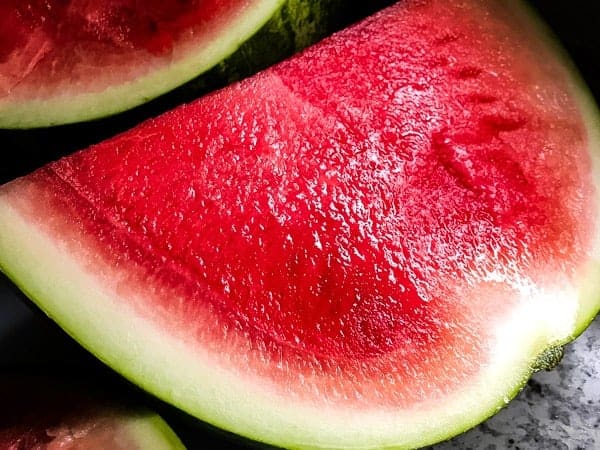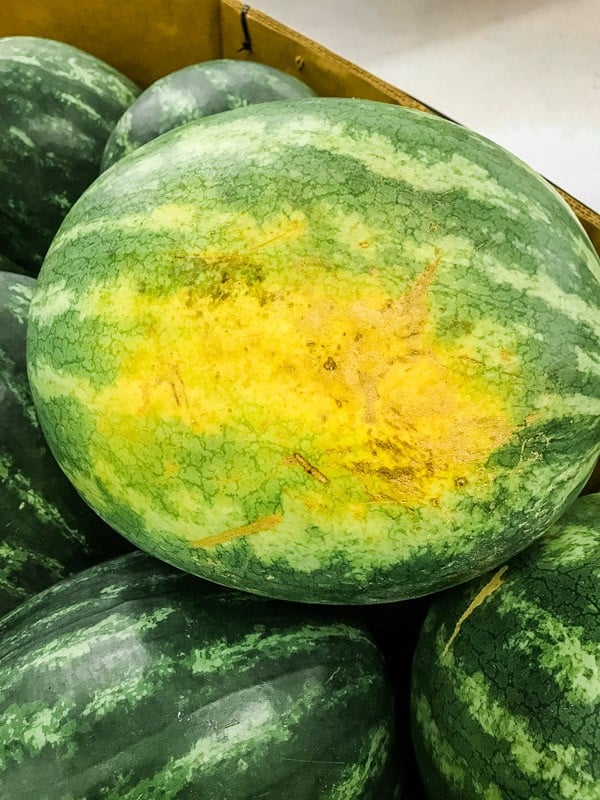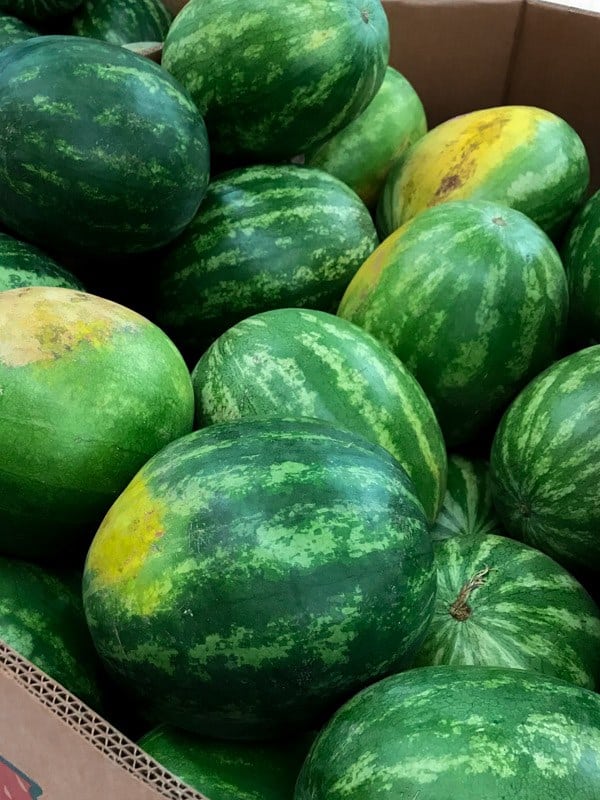Want to pick a sweet watermelon at the store? It’s easy if you follow these three tips: look for the yellow spot, make sure it’s heavy for its size, and check the melon for bruising. That’s it.
Want to know my summer superpower? I can pick a sweet watermelon at the store. When I mentioned this to a friend the other day*, she wanted to know my tips. I shared them (of course!) and got this text a few hours later.
*Yes, we were talking about fruit. Welcome to adult-ing conversations.
How to Pick a Sweet Watermelon
I buy seedless red watermelons. But these tips work for any type of watermelon.
Buy Watermelon in Season.
Like all fruits and vegetables, it’s best to buy watermelon during their season. For most of the United States, this means summer. You’ll find the best watermelons from May to September.
Look for a Large Yellow Spot.
As watermelons grow and ripen, they develop a yellow area, called a field spot, where the watermelon rests on the ground. The longer the watermelon is allowed to ripen in the field, the brighter and larger the spot. Look for a watermelon with a large, creamy yellow field spot.
Get the Heaviest One (The #1 Tip)
I think this is the #1 tip for ensuring you bring home a sweet, ripe watermelon: select a melon that’s very heavy for its size. I know this sounds vague. But if you pick up a few melons, you’ll quickly get a feel for what “heavy for its size” means. The melons I bring home are usually around 20-23 pounds.
Make Sure It’s Firm
Next up: check the melon for soft spots or insect holes. (See image above for an insect hole in a watermelon.)
Once you’ve visually inspected the melon, give it a squeeze. If it’s soft, back into the bin it goes. You want a watermelon that’s firm all over.
What Doesn’t Work (for Me) When Selecting a Watermelon
Knocking on it: I know they say a watermelon should sound “hollow.” But, eh, this one has never worked for me. I can’t seem to hear a difference. Plus rapping your knuckles on a hard watermelon hurts. Pass.
Looking for “Bee Stings”: Another piece of advice is to look for “bee stings” on the watermelon. These little holes and scratches are supposed to indicate that a bee tried to sting the watermelon because it’s sweet. I’m not an entomologist but this sounds suspect. If memory serves, bees go for pollen, not nectar. A bee is important for pollination; they don’t divine sweet fruit.






Sharyl says
Yes! I totally agree. Thank you!👍